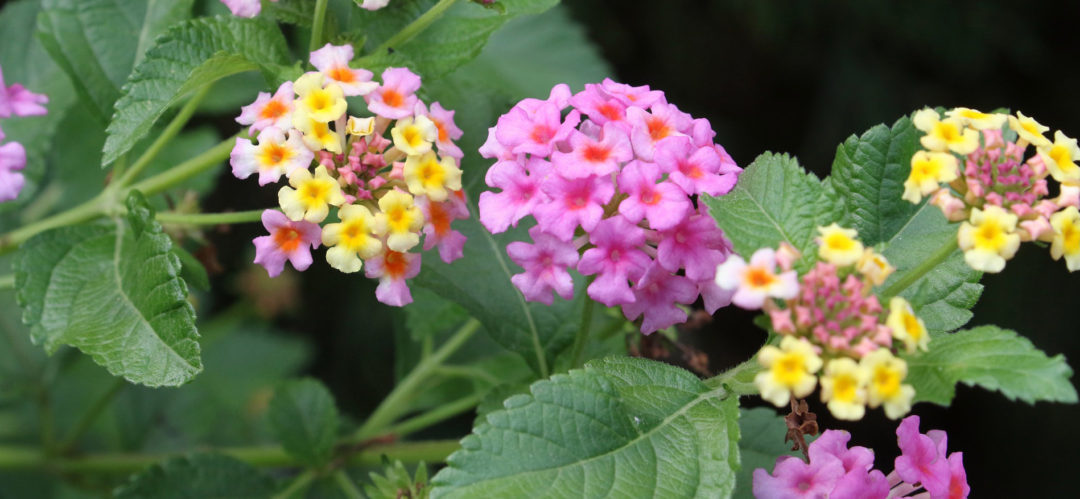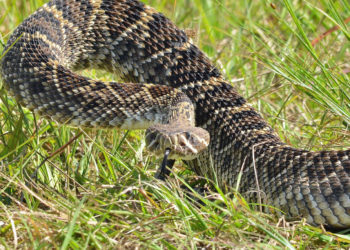So, you’re ready to grow lantana? We have several tips for you to ensure the best lantana experience possible.
General Location
First, pick out an ideal spot for your lantana plants. This plant loves the heat so it needs at least four hours of direct sunlight daily. Nighttime temperatures need to range between 55 and 60 degrees F, with daytime temps of 68 degrees F or higher. Humid or dry heat is fine, and lantana is hardy in USDA Zones 8-11. It reaches six feet high and eight feet across, depending on which variety you choose, so it can be used as a tall shrub or a low-level groundcover. It works best in mixed beds and borders or as part of a grouping of shrubs or as a container plant. Consider mixing it with ornamental plants if you prefer, but it also can grow well alone. It’s tolerant of a range of conditions such as dry, rocky sites, or sandy, seaside conditions. It can be planted in almost any site as long as it receives full sunlight.
Soil Conditions and Preparation
Opt for well-drained, slightly acid soil for lantana. You’ll want a soil pH of about 6.5 or lower. You can use any soil suitable for bedding plants. It’s fairly drought resistant and can adapt to most soil conditions. For instance, if the soil has a clay texture, add sand coarse bark. It’s best to prepare the beds a few weeks before planting if lantanas are to be planted in new beds. Use a power tiller to work the soil and add amendments as necessary. You can use a commercial potting soil if lantanas are used in hanging baskets or as potted plants.
Planting and Blooming
Plant lantana when days are long and hot. You’ll find that many varieties will return from the roots and main stems in early spring. You’ll get gorgeous blooms until frost. The flowers are in dense clusters, one to two inches across, near the top of the stem. The colors vary from yellow, orange, red, white and pink to purple. They gradually change colors during the blooming period. It’s quite possible to see different colors of flowers on the same cluster. The foliage is lovely, with a yellow-green color and a serrated edge. They are aromatic when crushed. The stem is brittle and woody. With care, it can be trained to grow in a shape similar to a tree, featuring great heads of foliage and flowers above a single stem that is two to three feet tall. Induce repeated flowering throughout the blooming season by frequently pruning the tips. It’s easy to care for lantana. Once the flowering season is over, clusters of green, fleshy, berrylike drupes will appear in the fall. They turn black as they mature and are poisonous if eaten. Each berrylike fruit contains one seed for a possible self-seeding option for the next blooming season.
Watering and Fertilizing
It’s necessary to water lantana often to get a good blooming experience. Water frequently in well-drained soil. If you over-water, then the number of blooms will be reduced and the plant will be more susceptible to diseases and root rot. Try to modify the watering schedule according to growth and the outside temperature. Don’t use heavy fertilizer. Instead, fertilize in early spring with a complete, all-purpose garden fertilizer. Depending on which variety you’ve planted, lantana may need more fertilizer through the middle of summer. This will encourage faster growth. You can fertilize every two weeks if you’ve planted a faster growing, heavy feeding type of lantana. But too much fertilizer will prevent the plant from flowering and will make it more susceptible to disease.
Mulching
Don’t forget to mulch. Mulching is essential if you are growing lantana as a perennial. It serves many purposes, including maintaining soil moisture and keeping weeds under control. It’s not necessary to mulch during the summer, but it will help with weed control and reduce the amount of watering needed. It’s best to also mulch after the first frost, when the lantana has been killed down to the roots, to keep the roots hardy to return the next spring.





No Comments